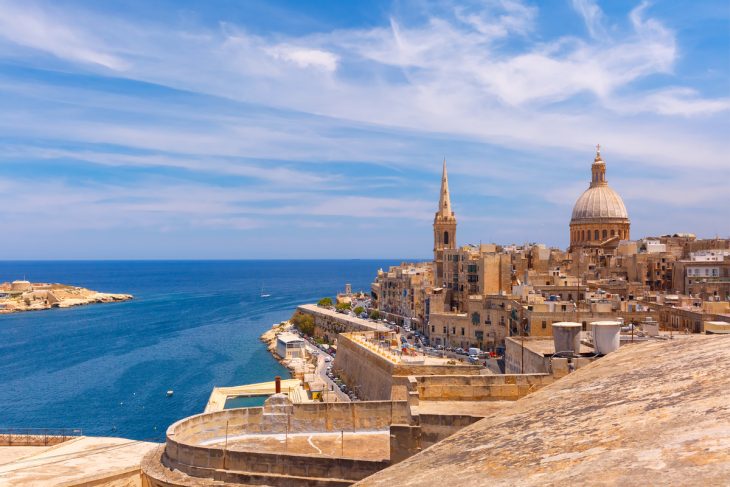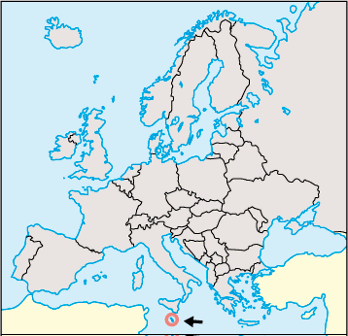What is the Capital of Malta? Valletta

Capital City of Malta: Valletta
City Overview
Valletta is the capital city of Malta, a small but historically rich island nation in the Mediterranean Sea. The city is not only the political and administrative capital of Malta but also a UNESCO World Heritage Site due to its exceptional history, architecture, and cultural importance. Valletta was built by the Knights of St. John in the 16th century, during the period when the Knights ruled the Maltese Islands. The city is named after Jean Parisot de Valette, the Grand Master of the Knights, who oversaw the construction of the city following the Great Siege of Malta in 1565.
Valletta’s strategic location between Europe and North Africa made it a key maritime hub in the Mediterranean, and it continues to be a focal point for trade, tourism, and governance. Despite being the capital, Valletta is a small city, both in terms of geographical area and population. The city’s compact layout makes it a perfect example of Baroque urban planning.
- Area: 0.8 km² (0.31 sq miles), making it one of the smallest capital cities in the world.
- Population: The population of Valletta is approximately 6,000 people, though the number swells significantly with the influx of daily commuters and tourists.
- Time Zone: Central European Time (CET), UTC+1 during standard time, and Central European Summer Time (CEST), UTC+2 during daylight saving time.
- Highest Mountain: Malta is not known for its mountainous terrain. The highest point in the country is Ta’ Dmejrek, located in the northern part of the island, but this is more of a hill than a mountain, with an elevation of 253 meters (830 feet).
- Longest River: Malta does not have significant rivers due to its small size and geography. The island is dotted with valleys, but these are mostly dry or seasonal.
Major Landmarks in Valletta
Valletta is rich in architectural and historical landmarks, many of which are relics from the time of the Knights of St. John, as well as other periods of the city’s long history. Some of the major landmarks include:
- St. John’s Co-Cathedral: One of the most famous landmarks in Valletta, this Baroque cathedral was built by the Knights of St. John. It houses several masterpieces, including Caravaggio’s painting of The Beheading of St. John the Baptist.
- The Grand Master’s Palace: This grand building served as the residence of the Grand Masters of the Knights of St. John. It now houses the Parliament of Malta and the Office of the President. The Palace is a symbol of Valletta’s role as the center of power during the rule of the Knights.
- Fort St. Elmo: Positioned at the tip of the peninsula, this fort was essential in defending the city during the Great Siege of Malta. It now houses the National War Museum, showcasing Malta’s military history.
- Upper Barracca Gardens: Offering stunning views over the Grand Harbour, these public gardens are one of Valletta’s most scenic spots. The gardens were originally created by the Knights as a private retreat.
- The Manoel Theatre: Built in 1731, it is one of the oldest working theatres in Europe. The theatre is a vital part of Malta’s cultural scene and hosts various performances and events.
- The National Museum of Archaeology: Located in a Baroque building, this museum showcases Malta’s prehistoric and ancient history, including items from the Megalithic Temples, which are among the oldest free-standing structures in the world.
- City Gates and Walls: Valletta is surrounded by impressive fortifications, including the city gates and thick defensive walls. These walls were built by the Knights to protect the city from invaders.
- Grand Harbour: One of the most natural deep-water harbors in the Mediterranean, it is surrounded by fortified walls and has been a key strategic location for centuries.
Climate Overview
Valletta enjoys a Mediterranean climate, characterized by hot, dry summers and mild, wet winters. The city is known for its pleasant weather, making it a popular destination year-round, particularly for tourists.
Monthly Climate Overview of Valletta
| Month | Average Temperature (°C) | Average Precipitation (mm) | Sunny Days |
|---|---|---|---|
| January | 12°C | 94 | 7 |
| February | 12°C | 84 | 8 |
| March | 13°C | 72 | 9 |
| April | 15°C | 50 | 10 |
| May | 18°C | 26 | 11 |
| June | 22°C | 5 | 12 |
| July | 26°C | 0 | 13 |
| August | 27°C | 0 | 13 |
| September | 24°C | 27 | 11 |
| October | 19°C | 71 | 9 |
| November | 15°C | 94 | 7 |
| December | 12°C | 94 | 6 |
Other Former Capital Cities of Malta
Throughout Malta’s history, other cities have served as the capital or administrative centers at different times, particularly during periods of conquest or change. Although Valletta has been the capital since the 16th century, there are a few notable cities that held significant roles before this.
Mdina
- Period: Prehistoric times to the 16th century
- Overview: Mdina, also known as the “Silent City,” was Malta’s capital until the construction of Valletta. It served as the political and cultural center of Malta for over 2,000 years. Mdina is renowned for its medieval architecture, narrow winding streets, and stunning views over the island. It still retains its historical charm and is a popular tourist destination today. Mdina was the seat of the island’s government and church authority until the Great Siege of Malta in 1565.
Cittadella (Victoria)
- Period: 16th to 18th century
- Overview: Cittadella, located in Victoria, Gozo, was the capital of Malta during earlier periods. It served as the administrative and defensive center of the Maltese islands under various rulers, including the Arabs, Normans, and later the Knights of St. John. Today, the Cittadella is a UNESCO World Heritage Site, offering a glimpse into Malta’s medieval past.
Country Facts: Malta
Malta is a small island nation located in the central Mediterranean Sea, south of Italy and north of Libya. Despite its small size, Malta has a rich history that stretches back to antiquity. It has been inhabited for thousands of years and has seen numerous powers, including the Phoenicians, Romans, Arabs, and the Knights of St. John, control the islands.
Country Overview
- Population: Approximately 514,000 (2023 estimate)
- Area: 316 km² (122 sq miles), making it one of the smallest countries in the world.
- Largest City: Birkirkara, located on the mainland, is the largest city by population, though Valletta is the political and historical capital.
- Currency: Euro (€), adopted in 2008.
- Official Languages: Maltese and English are the official languages. Maltese is the national language, while English is widely used in government, business, and education.
- ISO Country Code: MT
- Government: Malta is a republic with a parliamentary democracy. The President of Malta serves as the head of state, while the Prime Minister is the head of government.
- Capital: Valletta
Geography and Economy
Malta’s economy is primarily driven by services, including tourism, banking, and information technology. The country’s location in the Mediterranean makes it a strategic hub for trade and maritime activities. Malta also has a growing tourism industry, thanks to its historical sites, beautiful beaches, and Mediterranean climate.
Despite its small size, Malta has a high standard of living and is considered one of the richest countries in the world in terms of GDP per capita. The country’s economic ties are strongly aligned with the European Union, which it joined in 2004. Malta also plays an active role in international organizations like the United Nations and the Commonwealth of Nations.
Climate and Environment
Malta’s climate is predominantly Mediterranean, with mild, wet winters and hot, dry summers. The islands enjoy around 300 days of sunshine per year, making it a popular destination for tourists. The natural environment is characterized by rocky shores, clear waters, and a wealth of endemic plant and animal species.
Malta’s government is also working towards sustainable tourism and environmental protection, addressing challenges related to urbanization and climate change.
Cultural Heritage
Malta has a deep cultural heritage influenced by the various civilizations that have passed through the island. From prehistoric temples to Baroque architecture and modern art, the country is a testament to the diverse cultures that have shaped its identity over millennia.
Despite being small, Malta’s influence on the Mediterranean and world history is profound, particularly in the realms of religion, art, and governance. Valletta, with its stunning historic buildings and strategic location, is a fitting reflection of the country’s rich legacy.














































